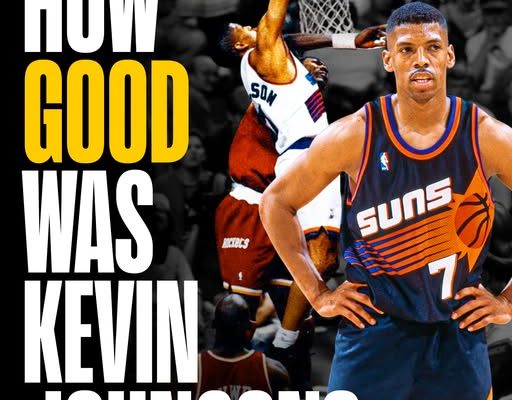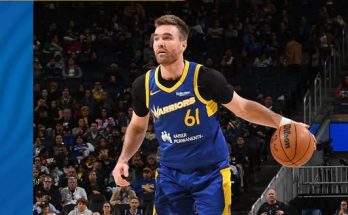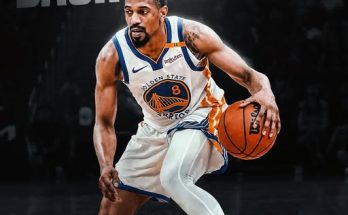Before Dwyane Wade ever slashed his way through defenses or De’Aaron Fox terrorized teams with jet-propelled transition bursts, there was Kevin Johnson—the NBA’s original speed demon guard whose electrifying blend of quickness, control, and ferocity laid the foundation for the modern fast-paced point guard archetype. Often overlooked in the larger conversations about NBA greats, Johnson wasn’t just ahead of his time—he was the blueprint for what was to come. In an era dominated by traditional big men and half-court execution, Johnson emerged from the shadows with a level of speed and explosiveness that would be more at home in today’s game than the grind-heavy late ’80s and early ’90s.
When Kevin Johnson, known as “KJ” around the league, first arrived in the NBA in 1987, he did so with quiet determination and unparalleled agility. Drafted seventh overall by the Cleveland Cavaliers, Johnson found himself buried on a roster that already had burgeoning star Mark Price running the point. It wasn’t long before the Phoenix Suns recognized the opportunity and pulled the trigger on one of the most impactful trades in franchise history, acquiring Johnson as part of a blockbuster deal involving Larry Nance. What followed was nothing short of a basketball awakening—for Johnson, for Phoenix, and for the league at large.
Johnson’s impact was immediate and seismic. After the trade, he averaged over 20 points and 12 assists per game during the 1988-89 season, a feat that placed him in elite company. But numbers only told part of the story. What truly separated Johnson was the way he achieved those stats. He didn’t simply dribble past defenders—he torched them, almost vaporizing with every first step. His ability to shift directions, stop on a dime, and accelerate into the paint with ferocity made him nearly unguardable. Defenders who sagged off would get a mouthful of pull-up jumpers; those who pressed up were left clinging to air as Johnson breezed by with crossover mastery.
KJ was one of the first guards to weaponize speed not just as a means of getting fast-break points, but as a constant pressure mechanism in the half court. Whether in pick-and-roll situations or iso plays, Johnson’s pace never let up. Unlike most guards of his time who relied on methodical probing or precise post entries, Johnson operated with a kinetic energy that dictated tempo on his own terms. In transition, he was a blur—forcing defenders into backpedals, creating cross-matches, and making decisions at a tempo most players couldn’t process, let alone counter.
It wasn’t just raw speed that made Johnson terrifying—it was his ability to control it. He could decelerate and change gears better than almost anyone, allowing him to lull defenders into a false sense of security before blowing by them. This mastery of pace put enormous pressure on opposing defenses, often collapsing entire formations and forcing rotations that left shooters wide open. Teammates like Tom Chambers, Dan Majerle, and later Charles Barkley all benefited from the open looks Johnson created simply by existing as a lightning rod of movement.
Despite his frame—listed at 6’1″, though likely shorter—Johnson was fearless in the paint. He routinely attacked the rim against giants like Hakeem Olajuwon, Patrick Ewing, and David Robinson, often absorbing contact and still finishing or drawing fouls. In fact, one of Johnson’s most iconic moments came in the 1994 playoffs when he drove baseline and detonated on Hakeem Olajuwon, the league’s reigning MVP and Defensive Player of the Year, with one of the most ferocious dunks ever by a guard. That moment wasn’t just viral highlight material—it was symbolic of how Johnson defied convention at every turn.
While Johnson never won a championship, largely due to the era’s iron-fisted dynasties like the Chicago Bulls and the Houston Rockets, his legacy is secure among those who understand the game’s evolution. During his peak years, he averaged over 20 points and 10 assists multiple times—a feat matched by very few. But more importantly, he changed how the point guard position was perceived. No longer was the ideal point man just a floor general or game manager. Thanks to Johnson, he could be a scorer, a creator, a slasher, and a blur all wrapped in one package.
His battles with Magic Johnson and John Stockton were the stuff of legend, and even though he didn’t always win the war, he always made opponents work for every inch. In many ways, Kevin Johnson was the West Coast’s answer to Isiah Thomas—a blazing, scoring-savvy point guard who never backed down from a challenge and made his teammates exponentially better. The comparisons, though often not made, are apt. Thomas had the rings and larger stage; Johnson had the quicker first step and the same fearless heart.
As the years progressed and injuries began to catch up to him, Johnson’s production declined, but his influence didn’t. Guards like Allen Iverson, Steve Nash, and Chris Paul all drew from the same blueprint Johnson helped pioneer. More recently, when watching De’Aaron Fox fly down the court or Ja Morant elevate in transition, you’re witnessing echoes of what Kevin Johnson was doing more than three decades ago. He may not have had Instagram reels or viral TikToks to showcase his speed, but those who saw it live will never forget.
Off the court, Johnson became just as impactful, stepping away from basketball and eventually becoming the mayor of Sacramento. His ability to lead and inspire never left him, even as the platform changed. But for basketball purists, he’ll always be remembered first as the Suns’ turbo-charged engine—a player who fused athleticism and intellect in ways that redefined his position.
It’s easy to forget players like Kevin Johnson in today’s highlight-saturated culture, where every crossover and dunk is immortalized seconds after it happens. But history has a way of circling back. As today’s NBA continues to be dominated by lightning-quick guards who thrive in space and explode off the bounce, the fingerprints of KJ are all over the floor. Before Wade and Fox dazzled crowds with downhill dominance, Johnson was already setting the pace—faster, bolder, and relentlessly ahead of his time.



